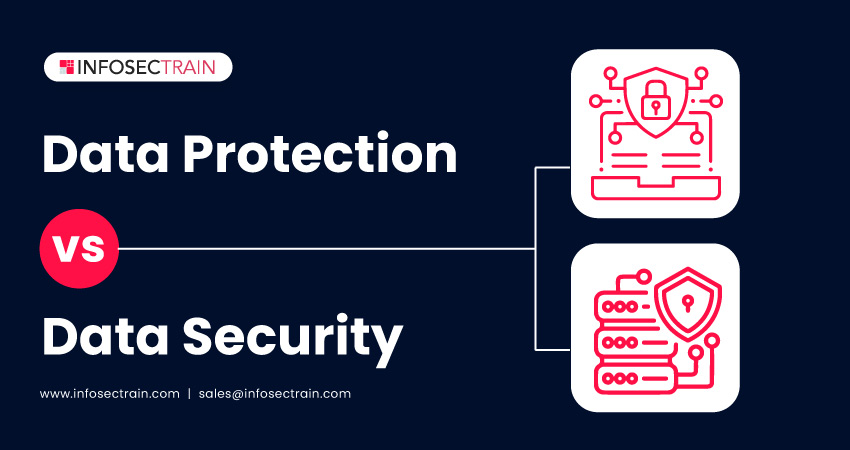Data Protection vs. Data Security
Data is an organization’s most important asset and must be secured accordingly. Because there are so many possible methods for an organization’s data to be lost or compromised, organizations must take a diverse strategy to ensure the safety of their data. As a law company specializing in personal data, we have noticed that organizations frequently conflate data protection with data security. Data security and data protection are completely separate ideas, even though they overlap.

Here in this article, we are talking about the two concepts: data protection and data security because we feel that knowing their differences can help organizations establish a higher degree of understanding and compliance.
Table of Contents
What is Data Protection?
Principles of Data Protection
What is Data Security?
Data Protection vs. Data Security
What is Data Protection?
Data protection is the process of safeguarding sensitive data against loss, manipulation, and damage. Data protection is becoming more crucial as data production and storage have expanded at an unparalleled rate. Additionally, as data is used more and more in organizational processes, even a brief period of downtime or a small quantity of data loss can significantly impact a company.
The protection of data requires both administrative and technical solutions. Legal considerations are part of administrative measures (privacy policies, terms, conditions, etc.).
Principles of Data Protection
The fundamental concept of data protection is to assure that data is always safe and accessible to its users. Data management and data accessibility are the two main pillars of data protection.
- Data availability ensures that clients can access the data they require for operations, even if it is damaged or deleted.
- Data management involves two major aspects of data protection: 1. Data lifecycle management, Information lifecycle management
What is Data Security?
Data security protects digital information from internal and external, malevolent, and unintentional dangers. Although data security is concerned with keeping data secure, it also includes infrastructure security; it is difficult to secure data if the supporting architecture is not secure appropriately. Organizations have implemented numerous security procedures and data security solutions to ensure data security. Multi Factor Authentication (MFA) is one example, which uses at least two separate processes to validate a user’s identity before giving access to data.
Data Protection vs. Data Security
The terms “data protection” and “data security” are pertinent when discussing data. Both are given a lot of importance today thanks to the idea of digital data. Both words are typically used in the same context. Both mention protecting the data. Data can be stolen in the same manner that other things are. As a result, sensitive information is maintained in a highly secured area.
However, data security and data protection are two different entities. Data protection ensures that data can be restored if necessary, whereas security is intended to stop a hostile attack on an organization’s data and other IT resources.
Security is typically implemented using a defense-in-depth technique, which means that if an attacker penetrates one of the organization’s defenses, other boundaries are in place to prevent data access. Data protection might be viewed as this technique’s last line of defense. If a ransomware outbreak completely encrypts an organization’s data, a backup tool can be utilized to recover and restore all of the organization’s information systems.
The difference between data protection and data security:
| Data Protection | Data Security |
|
|
|
|
|
|
|
|
Data Privacy Professional with InfosecTrain
The Certified Data Privacy Professional (CDPP) training course teaches various data privacy laws and policies from various regions and countries. InfosecTrain is a reputable global provider of IT security training and consulting services focusing on various IT security courses. The Certified Data Privacy Professional (CDPP) training from InfosecTrain aims to explain the privacy framework to you fully.







 1800-843-7890 (India)
1800-843-7890 (India)